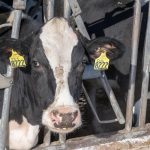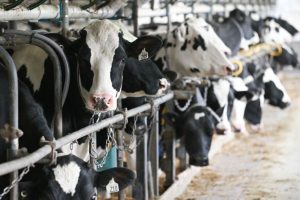
To produce the milk that you serve at breakfast, or with which you prepare countless dishes, many individuals, humans and animals, and natural and industrial processes, the hand of God, and the hand of man creating and working in unison, were involved.
Milk is an irreplaceable food for human beings, recognized for its high nutritional value, and which most countries have included in their healthy eating guidelines, due to its importance in a balanced diet.
This global recognition is based on its ability to provide proteins, fats, carbohydrates, calcium, minerals and essential vitamins, contributing significantly to the well-being and health of people, from their first hours of life to their last.
With the aim of addressing issues related to the dairy sector and promoting consumption worldwide, to highlight its importance and health benefits, FAO established in 2001 the International Milk Day, for every June 1st.
A long way home
Dairy farming is much more than milking a cow. At 22 to 24 months after birth, and after a pregnancy of 9 months, a cow gives birth for the first time and becomes a dairy cow. Until she reaches this stage, she goes through different periods of exhaustive care and attention to ensure her absolute well-being.
What this mother cow produces far exceeds the needs of her calf, so she is milked with care, and the milk is stored and transported to the dairy plants, where it is processed to become the products we all consume, and which are produced, processed and distributed under strict sanitary controls.
The challenge of dairy production lies in achieving maximum efficiency while ensuring animal welfare. This involves providing adequate feed, protection, hygiene and safety, minimizing stress, while caring for the environment and natural resources to ensure sustainable production.
Argentina
- Argentina produces more than 12 billion liters of milk per year.
- Each cow gives between 20 and 23 liters of milk per day.
- They drink about 200 liters per person per year
- 80% of its production is marketed domestically
- 20% is exported to Brazil, Chile and Algeria.
- 35% of this milk is processed into various types of cheese.
Brazil
- Brazil produces more than 34 billion liters per year.
- Each cow provides between 15 and 18 liters of milk per day.
- They consume approximately 170 liters per year per person.
- Approximately 97% of their milk production is marketed domestically.
- They export 3% to countries such as Venezuela, China and the United Arab Emirates.
- About 25% of the milk is used to make cheese.
Mexico
- Mexico produces more than 12 billion liters of milk per year.
- Its milking cows produce between 16 and 20 liters of milk per day.
- They consume almost 130 liters per year per person.
- Domestic consumption is around 98%.
- The 2% is exported to the United States, Guatemala and other countries.
- About 20% of the milk is processed into different types of cheese.
United States
- In the United States, more than 100 billion liters of milk are produced each year.
- Each cow produces between 30 and 35 liters of milk per day.
- Each American consumes approximately 250 liters per year.
- Eighty-five percent of milk production is marketed domestically.
- Fifteen percent is exported to countries such as Mexico, Canada and China.
- About 50% of the milk is used in various types of cheese.
Europe (European Union)
- The European Union produces more than 160 billion liters per year.
- Each cow produces between 20 and 30 liters of milk per day.
- Approximately 250 liters per year per person are calculated.
- Ninety percent of milk production is marketed on the continent.
- Ten percent is exported to countries such as China, the United States and Saudi Arabia.
- About 45% of the milk is processed into various types of cheese.
Oceania (mainly Australia and New Zealand)
- Oceania produces more than 30 billion liters per year.
- Each cow produces between 20 and 25 liters of milk per day.
- They consume approximately 100 liters per year per person.
- Approximately 40% of milk production is marketed domestically.
- Sixty percent is exported to countries such as China, Japan and other Southeast Asian countries.
- About 35% of the milk is processed into various types of cheese.
You can now read the most important #news on #eDairyNews #Whatsapp channels!!!
🇺🇸 eDairy News INGLÊS: https://whatsapp.com/channel/0029VaKsjzGDTkJyIN6hcP1K






















